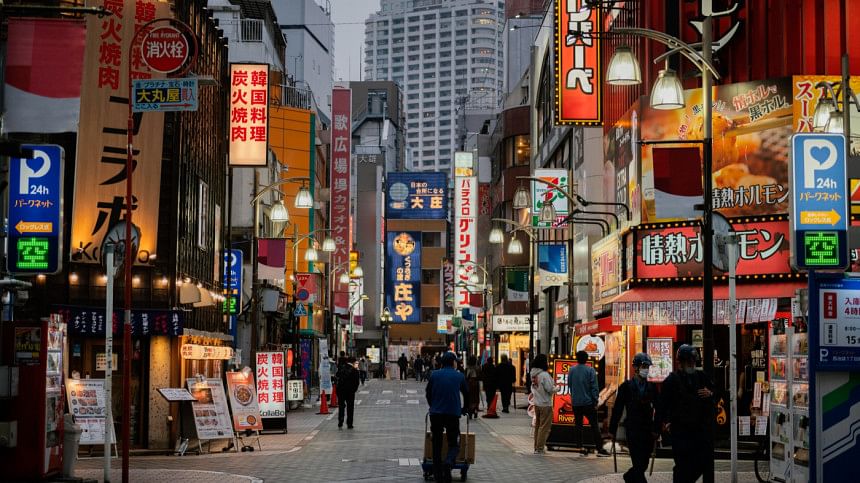Japan's Q2 GDP growth revised down; softer consumption to test BOJ policy

Japan's economy grew at a slightly slower pace than initially reported in the second quarter, hurt by downward revisions in corporate and household spending that point to a bumpier second half for consumption and the central bank's rate-hike plans.
The Bank of Japan is keen to see consistent improvement in domestic demand as it focuses on exiting its decade-long monetary stimulus programme and raising interest rates further in coming months.
The nation's gross domestic product expanded by an annualised 2.9 percent in the April-June quarter from the previous three months, the Cabinet Office's revised data showed on Monday, versus economists' median forecast for 3.2 percent growth and a 3.1 percent rise in the preliminary estimate.
The revised figure for the world's fourth-biggest economy translates into a quarter-on-quarter expansion of 0.7 percent in price-adjusted terms, compared with a 0.8 percent rise issued last month.
"The economy as a whole has been stagnant since the second half of 2023 although it had finally rebounded in April-June," said Kengo Tanahashi, economist at Nomura Securities.
The capital expenditure component of GDP, a barometer of private demand-led strength, rose 0.8 percent in the second quarter, revised down from a 0.9 percent uptick in the initial estimate. Economists had estimated a 1 percent rise.
Private consumption, which accounts for more than half of the Japanese economy, increased 0.9 percent, versus the preliminary reading of 1 percent growth.
Analysts expect the Japanese economy will continue to improve gradually supported by positive trends in wages and personal and corporate spending, while risks remain from external factors such as a potential slowdown in the US and Chinese economies.
The economy may show signs of losing momentum in the current quarter, Tanahashi of Nomura securities said, citing weaker-than-expected July household spending data released last week.
"The July household spending data was disappointing, to say the least, and the (real) wages bump in June and July were anchored by summer bonuses than by an increase in basic salaries," he said.
"The possibility that the momentum of private consumption in the July-September period will be weaker than expected has been increasing."
External demand, or exports minus imports, knocked 0.1 percentage point off growth, unchanged from the preliminary reading. On the other hand, domestic demand contributed 0.8 percentage point.
While the revised second quarter GDP data is likely to have little sway on BOJ's decision making now, economists said recent data on spending is clouding the path to the central bank's rate-hike plans.
The BOJ in July raised its key interest rate to 0.25 percent from 0-0.1 percent, and markets are looking for clues to the timing of its next move.
None of the economists polled by Reuters last month predicted a rate hike at the next policy-setting meetings on Sept. 19-20, while a majority anticipated a tightening by year's end.
Nomura's Tanahashi said the BOJ is likely to proceed with the normalisation of monetary policy absent any market turmoil, noting the central bank went ahead with a rate hike in July despite softer consumption.
Most other economists also expect the central bank to continue to raise rates barring major trouble spots on growth and inflation.
"While underlying inflation has been moderating since the start of the year, we expect this trend to reverse in response to strong wage growth and resilient activity," said Benjamin Shatil, economist at JPMorgan Securities.
"We continue to expect the BOJ to deliver its next rate hike in December."

 For all latest news, follow The Daily Star's Google News channel.
For all latest news, follow The Daily Star's Google News channel. 








Comments